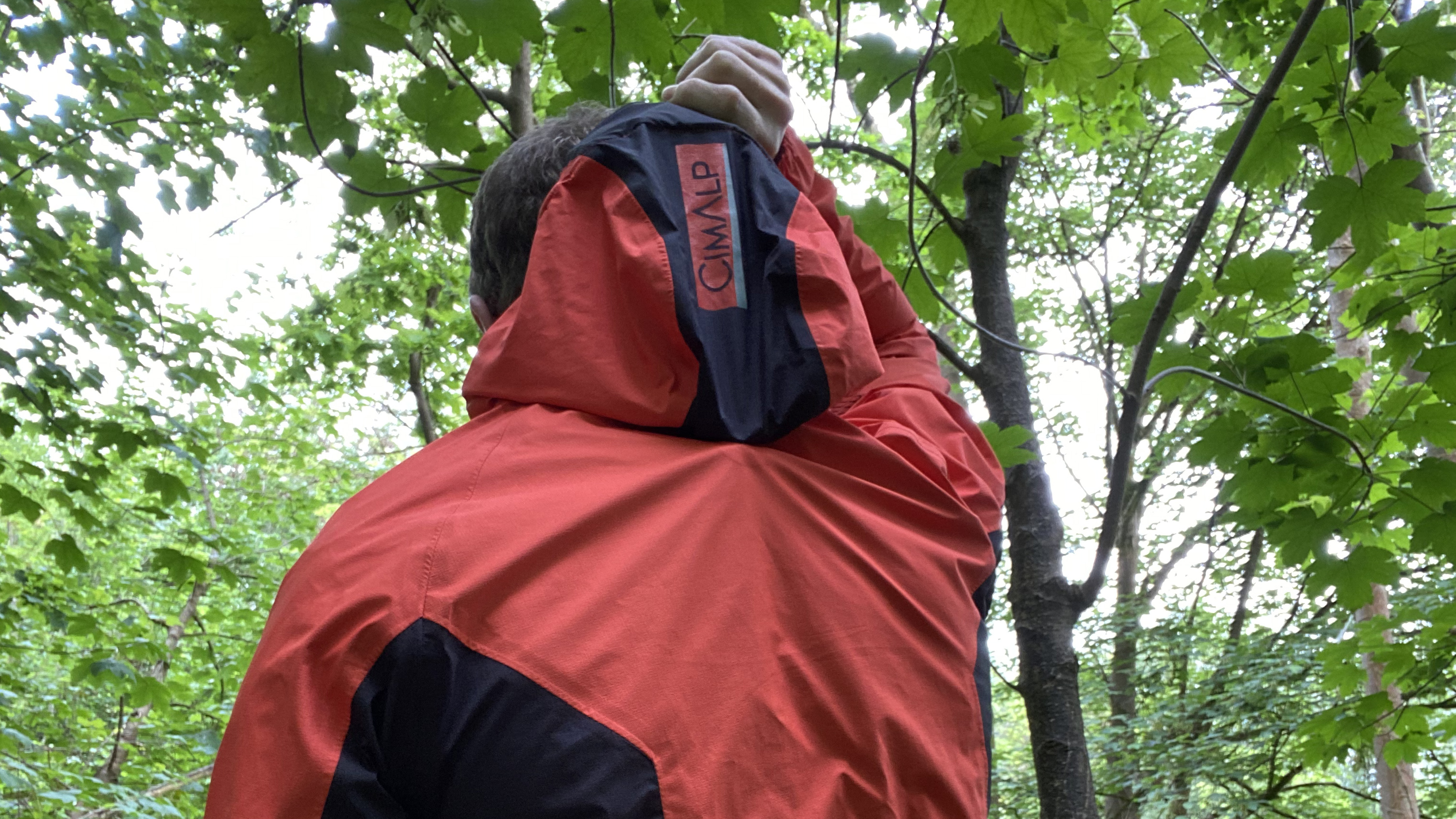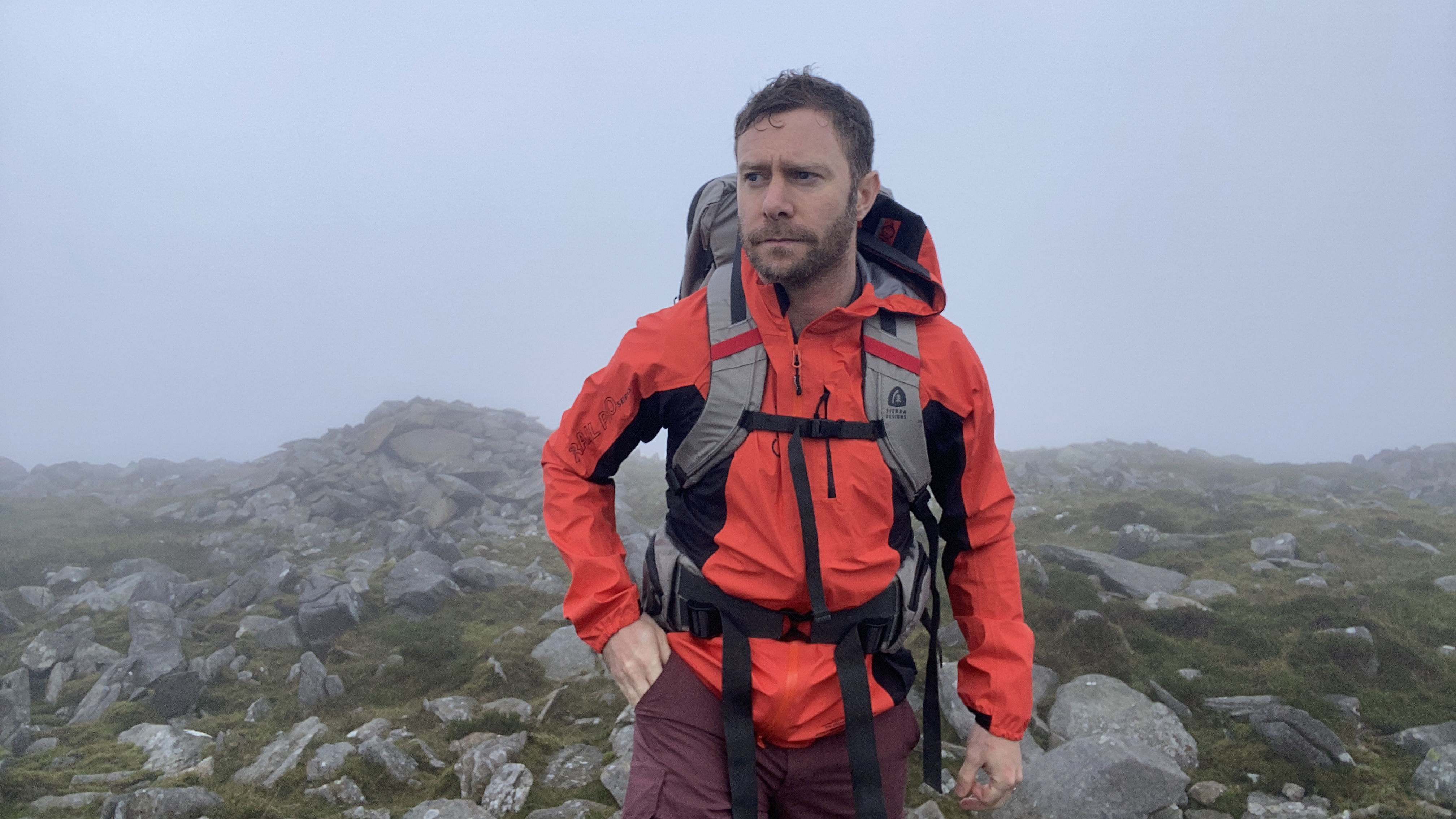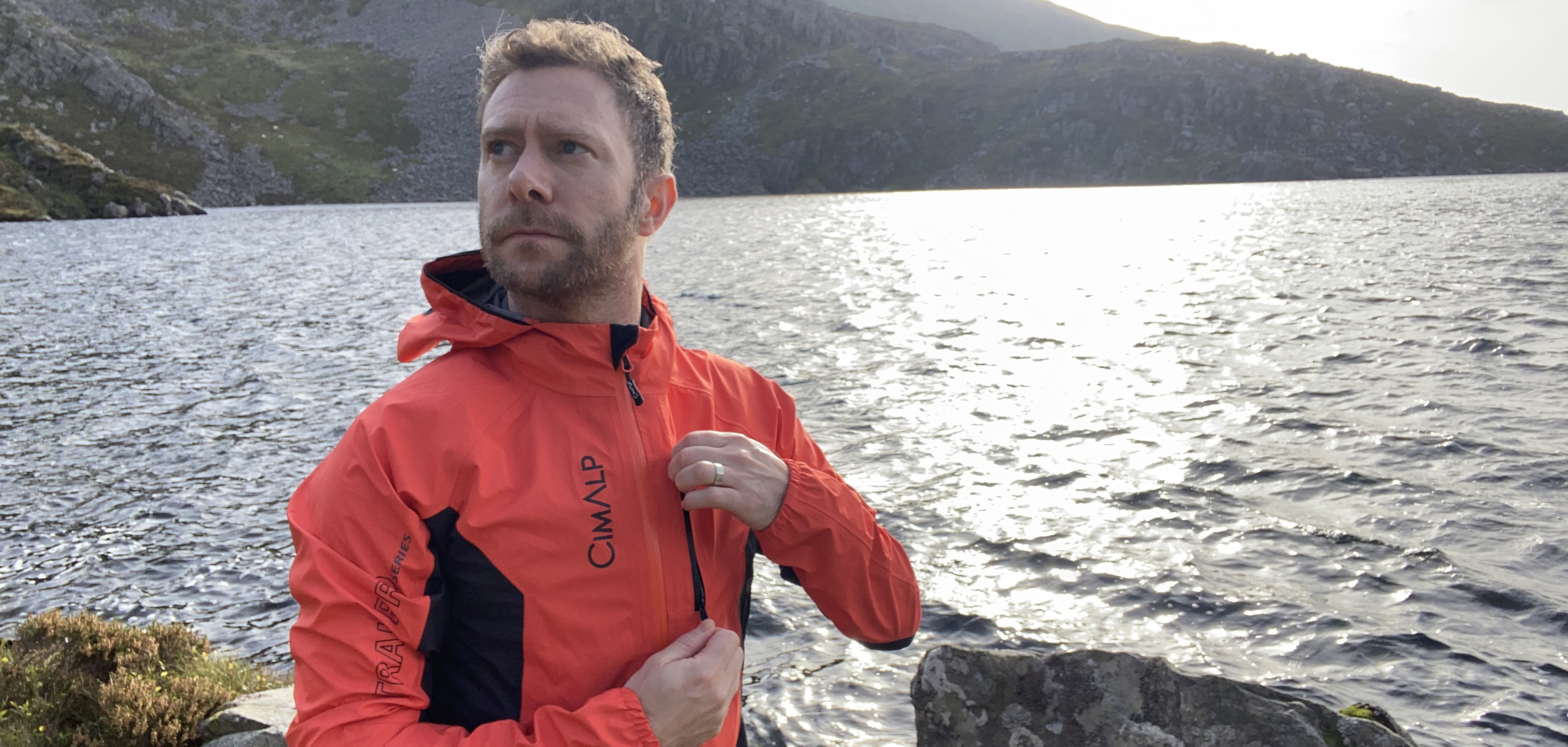Advnture Verdict
This is a great waterproof outer shell that combines solid waterproof credentials with high breathability. It’s more robust and slightly heavier than many running jackets, lacking that barely there feel some have. However, this is a jacket designed for extremes, so for winter runs in the mountains or alpine exploits, it’s a good shout. It works well as a waterproof jacket for hiking days too.
Pros
- +
Sporty look with attractive color options
- +
Nicely breathable
- +
Solid, Ultrashell waterproofing
- +
Great price considering performance
- +
Clever magnetic tab on hood
- +
Bluesign approved fabrics
Cons
- -
Slightly restrictive when it comes to arm movement
- -
Lacks the barely there feel of some running jackets
- -
Hem, cuffs and hood aren’t adjustable
- -
No women’s version
You can trust Advnture
Founded in 1964, CimAlp is a French brand based in the Vercors, the country’s main Pre-Alps massif. It crafts a wide range of clothing, footwear and equipment for various alpine exploits, from hiking and mountaineering to trail running, skiing and mountain biking. I’ve had the pleasure of testing various bits of CimAlp gear in the last few years and I’m always impressed with the overall quality and the decent value on offer.
CimAlp’s products make use of proprietary technologies, such as its Ultrashell breathable and waterproof membrane and its Cimaloft hybrid insulation. Browse its waterproof jackets and you won’t see a Gore-Tex logo. The Storm Pro Jacket is a running jacket designed for speedy mountain goats and skyrunners. I was delighted to get hold of one to test in the latter half of 2023 and have been hitting the trails in it ever since.
Meet the reviewer

A qualified Mountain Leader, Alex is a regular trail runner and loves moving fast and light through the mountains. Among his more adventurous runs, he's taken on Wales' 15 highest peaks in a single circuit and competed (if you can call it that) in the legendary Ring of Steall Skyrace in the Scottish Highlands. As one of our trail running gear experts, he always tests his kit to the max in the hills and mountains.
First Impressions

RRP: $229.90 (US) / £229.90 (UK)
Gender specification: Only male version of the Pro, however there is a female Storm version
Sizes: Men’s: XS to 2XL
Materials: 3-layer face fabric with Ultrashell waterproof membrane
Weight: 290g / 10.2oz
Colors: Rouge/Noir; Yellow; Anthracite; Green; Navy Blue; Bleu/Noir
Best use: Trail running, hiking
Like so many of the outdoor brands that are clustered around the alps, CimAlp don’t really do subtlety. Their kit is always bright and sporty looking, giving me definite Chamonix raceday vibes. The Storm Pro is no different and comes in a very attractive array of bright colors.
First wear reveals this to be a jacket that’s slightly more rugged than something like Salomon’s Bonatti Trail Jacket. The fabric feels more like a standard waterproof hardshell's and it also weighs quite a bit – 290g (10.2oz) to be precise, which is around 100g (3.5 oz) more than something like the uberlight Bonatti. This suggests a jacket that's more durable and robust than an emergency outer stuffed in a hydration pack to satisfy race day kit inspectors. This is a jacket for extreme running, built to cope with the harshest elements.
Features

The Storm Pro features CimAlp’s proprietary Ultrashell waterproof membrane, which boasts a 20,000 mm hydrostatic head, a PFC-free DWR finish, 80k MVP (Moisture Vapor Permeability) breathability and is windproof beyond 100mph. All the fabric is Bluesign approved, meaning it meets the internationally recognized sustainability standard.
So, unpacking the jargon, this means that the fabric provides excellent waterproofing, working in tandem with the jacket’s stormguarded main zipper and welded seams, which are two design touches designed to reinforce potential weaknesses. The DWR finish makes water bead on the surface, without compromising the jacket’s breathability. An 80 MVP rating means excellent moisture wicking capabilities, letting moisture escape while keeping me relatively dry on the inside too. Its windproof qualities will also have you covered for pretty much all adventures – I’ve been up a Scottish mountain in 70mph winds (not in this jacket, unfortunately) and it’s not an experience I ever want to repeat, so if you ever find yourself in 100mph winds, something has gone terribly wrong.
There are no pit zips or other ventilation openings, so the best option for dumping heat is to open up the front zipper. Towards the top, beneath the zip, is a button fastening that holds the jacket in pace when you open it up. This is both good from a ventilation point of view but also works well if you’re wearing a hydration pack beneath the jacket and need to access your water or gels. The fit is designed to accommodate this.
All the latest inspiration, tips and guides to help you plan your next Advnture!

In terms of storage, there’s just the one zippered chest pocket here, which is too small for a topographical map but is well sized to hold a phone or sugary snacks. A little mesh compartment within the pocket splits it into two sections.
The hem and cuffs are both elasticated, though there’s no adjustability beyond this. The cuffs feature elasticated thumb loops, allowing you to partially shield your hand at the start of brisk morning runs. The cut of the hem is shorter than many waterproofs, especially at the back, so doesn't provide quite as much protection as longer jackets.
Really clever touches are at play in the hood and the upper back of the jacket. Here, you’ll find two circular, internal magnets that connect to hold the hood down when it’s not in use. This stops it whipping around in high winds. There’s no adjustability in the hood, although it is nicely tight-fitting and I found it stayed in place on the trails. I managed to squeeze a climbing helmet in, which very much put the fabric of the jacket at full stretch. Of course, it’s not necessarily designed for mountaineering use.

In the mountains
I’ve used the Storm Pro for fast and light hiking and scrambling days in Wales’ Eryri (Snowdonia) National Park, as well as on winter trail runs closer to home. It’s high levels of weather protection and breathability are impressive. It was able to fend off heavy rain for many hours in the mountains, while its moisture wicking capabilities meant that I was able to regulate my temperature well during long ascents.
The ability to open up the front zip while the upper button fastening held the jacket in place was a blessing when it came to dumping heat. I was also able to sup from my soft flasks, holstered in my hydration pack beneath. I like the tight fit of the hood, despite the lack of adjustability, and it stayed in place in windy conditions.
For a running jacket, it’s on the heavier side and I’d opt for lighter options for most outings. Only if I knew I was going to be out in really challenging conditions for a prolonged period would I turn to the Storm Pro. So, for a half day run in the fells, it wouldn’t make the cut. For a mountain marathon with a questionable forecast, it’s in.

Also, freedom of movement is mostly good but not perfect. It feels a little restrictive when I raise my arms, tightening up around the armpits, and if I cross my arms in front of me, it tightens at the back, shoulders and, again, around the armpits. This means it’s not a jacket I’d grab again for scrambling or climbing.
However, the solid credentials of its 3-layer fabric and its relatively low gram count make this a good jacket for fast hiking and trekking, even when the forecast is having a wobble. In truly dreich (Scottish for awful) weather, the relatively high cut, combined with the lack of adjustability of the hem, cuffs and hood mean that there are a few weak spots for water ingress compared to many dedicated hiking jackets.
All in all, the Storm Pro is a good, versatile jacket. There are lighter, albeit less protective running jackets out there, but with the Storm Pro you’ve got a reliable waterproof you can both hike and run in.
Alex is a freelance adventure writer and mountain leader with an insatiable passion for the mountains. A Cumbrian born and bred, his native English Lake District has a special place in his heart, though he is at least equally happy in North Wales, the Scottish Highlands or the European Alps. Through his hiking, mountaineering, climbing and trail running adventures, Alex aims to inspire others to get outdoors. He's the former President of the London Mountaineering Club, is training to become a winter mountain leader, looking to finally finish bagging all the Wainwright fells of the Lake District and is always keen to head to the 4,000-meter peaks of the Alps. www.alexfoxfield.com


